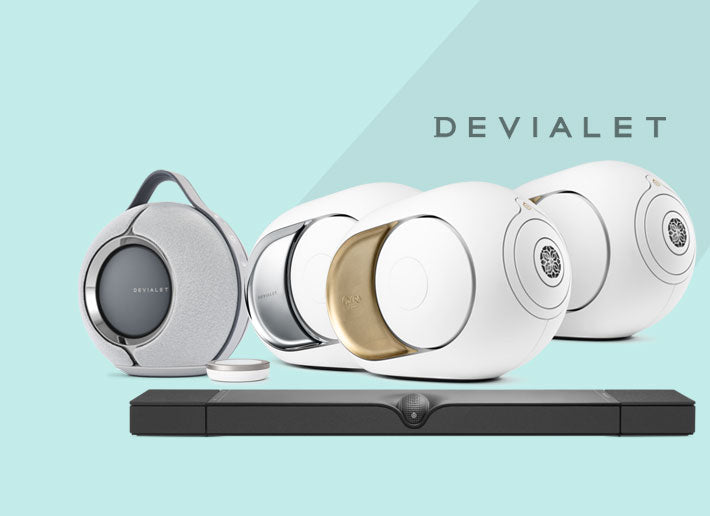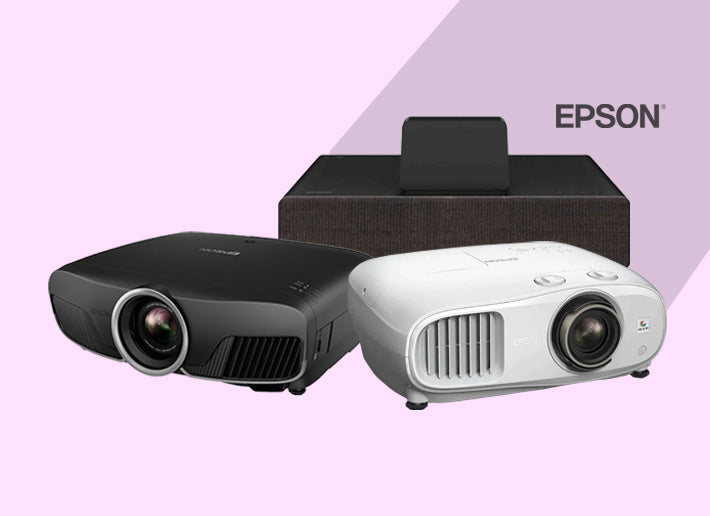While ultra-short throw (UST) projectors have taken the industry by storm, traditional standard throw projectors might still have something to offer
In recent years, a steady proliferation of Ultra-short throw (UST) projectors has seen home theatres, classrooms and digital signage completely transform as a medium of infotainment. With the ability to project large images from incredibly close distances, UST projectors offer a solution to the space constraints and installation challenges often associated with traditional projectors.
You would be forgiven for thinking UST projectors are only a few years old. However, they have been conceptually around since the early 2000s.
But the march of technology is relentless and sure enough, there was a significant breakthrough in 2014 when laser light sources were introduced to UST projectors. This dramatically improved image quality, longevity and energy efficiency and coupled with advancements in lens technology and digital image correction, paved the way for wider adoption.
So let’s understand the appeal of these projectors, how they differ from standard throw projectors and where they are primarily used today.
UST vs. Standard Throw Projectors: What are the differences?
Before diving into a detailed comparison, let’s understand the fundamental differences between standard and ultra-short throw (UST) projectors. Perhaps the most prominent difference between the two is the throw ratio. Standard throw projectors typically have a throw ratio of 1.5:1 or higher while for UST projectors, it is less than 0.5:1. This means that the distance between a standard throw projector and the screen it is projecting on must be 1.5 times the screen width. As you can tell, UST projectors need only a third of that distance to operate optimally and produce a sharp and vivid image.

Image credit - Elite Screens
Standard throw projectors are often ceiling-mounted or placed on a table at the back of a room whereas UST projectors sit inches away from the projection surface on a low cabinet or stand. This allows UST projectors to be used in smaller spaces and eliminate any kind of lens obstruction by people or objects in the way. Where standard throw projectors employ conventional lens designs, UST models use complex aspherical lenses and often incorporate mirrors to achieve their extreme angles.
While both types can project onto various surfaces, UST projectors often benefit from specialised ambient light-rejecting (ALR) screens. These screens are designed to enhance contrast and colour vibrancy by reflecting light from below (where the UST projector sits) while absorbing ambient light from other directions, resulting in a clearer image even in well-lit rooms.
Also Read: Ultra-Short Throw Projectors and Screens: Perfect Pairings
Now that we understand the basics, let’s look at some other technological aspects of both projector types and see where they differ.
Pro Tip - What UST projectors lack in limited image adjustment compared to standard throw projectors, they make up in less shadow interference.
* Resolution - UST projectors often feature 4K resolution to maintain sharpness at large sizes from close distances. In contrast standard throw projectors are often available FullHD 1080p resolution as well.
Pro Tip - UST projectors generally offer sharper images due to their proximity to the projection surface compared to standard throw projectors
* Light Source - Predominantly using laser or LED light sources, UST projectors generally feature longer life and instant on/off capability. Standard throw projectors use a mix of lamp, LED and laser technologies.
Pro Tip - Though UST projectors offer longer lifespans, it is generally cheaper to service standard throw projectors using non-laser light sources
* Brightness - Luminosity for UST projectors typically ranges from 2,000 to 5,000 lumens, with some high-end models providing a brighter image. You’ll often find a wider range of offerings in standard throw models, from 1,000 to over 10,000 lumens for large venue projectors.
Pro Tip - UST projectors are most suitable for rooms that can manage ambient light well as they typically don’t get as bright as their counterparts
* Contrast Ratio - You’ll often see higher contrast ratios in UST projectors due to their proximity to the screen and advanced light control. Contrast can vary widely in standard throw projectors depending on the technical specs and environment.
Pro Tip - UST projectors generally provide better blacks (and thus contrast) compared to standard throw ones provided ambient light is managed well
* Colour Accuracy - Many UST projector models emphasise colour accuracy for home theatre use. When it comes to standard throw projectors, it’s a mixed bag. Colour accuracy varies, but high-end models offer excellent performance.
Pro Tip - Though UST projectors generally offer wider colour gamuts, pro-grade standard throw projectors are not far behind in colour accuracy
* Input Lag - UST projectors generally have higher input lag (the delay between a signal being sent to the display and the resulting image appearing on the screen) due to more complex image processing. Standard throw projectors can offer lower input lag, making them preferred for gaming in some cases.
Pro Tip - If you’re buying a projector primarily for gaming, ensure it has gaming-centric features such as a high refresh rate and low input lag
* Audio - You’ll generally find a slightly more powerful built-in audio system in a UST projector compared to a more implementation in standard throw projectors. However, this is mainly a function of price as the average standard throw projector is much cheaper than a UST variety.
Pro Tip - UST projectors often have slightly better built-in audio due to their larger chassis, but nothing that compares to a dedicated sound system
* Installation Flexibility - UST projectors are limited to front projection and are usually placed on a cabinet or low stand. On the other hand, standard throw projectors can be ceiling-mounted, rear-projected, or used on a table.
Pro Tip - If you have a compact room and want to be able to move your projector around freely, a UST projector is the way to go
* Maintenance - Due to their sealed optics and long-life light sources, UST projectors often require less frequent maintenance. Depending on the technology that is used, standard throw projectors may need more frequent lamp changes if using traditional bulb technology.
Pro Tip - If you’re looking for reliability and carefree operation, a UST projector is a hassle-free option compared to a standard throw projector
* Price - UST projectors are generally more expensive (although they have become significantly cheaper in recent years) due to complex optics and advanced features. Standard throw projectors offer a wider range of price points, from budget to high-end models.
Pro Tip - Go with a standard throw projector if you’re on a strict budget as they are more mature technologically and offer a broader range of options
Aspect |
Standard Throw |
UST |
The Pros |
|
|
The Cons |
|
|
Now that we thoroughly understand the differences between the two, let’s look at where and how they are best used.
UST vs. Standard Throw Projectors: What Do I Pick?
As we can see, both projector technologies have their technological strengths and weaknesses so choosing the ideal one is a function of your needs and requirements. Let’s briefly look at where these projectors excel.
Standard Throw Projectors
- Large auditoriums or lecture halls: Their ability to project from a distance makes them ideal for large spaces.
- Outdoor movie nights: Higher brightness levels help overcome ambient light in outdoor settings.
- Professional cinema rooms: They can achieve very large screen sizes and are often preferred by enthusiasts.
- Gaming setups: Lower input lag is beneficial for responsive gameplay.
- Multi-purpose rooms: Ceiling mounting keeps the projector out of the way when not in use.

Image credit - Epson
Ultra-Short Throw Projectors
- Small living rooms or apartments: They can create large images without requiring much space.
- Classrooms: Teachers can interact with projected content without casting shadows.
- Art installations: The projector's proximity to the wall allows for creative, immersive displays.
- Retail environments: They can turn shop windows into dynamic displays without taking up floor space.
- Home theatres in bright rooms: When paired with ALR screens, they perform well even with ambient light.
- Conference rooms: Easy setup and the ability to walk in front of the image without casting shadows are beneficial.

Image credit - Epson
In our final section, we’ll take a look at where projector technology is generally headed and what improvements we can see in the future.
Also Read: What's The Difference Between Standard, Short Throw and Ultra Short Throw Projectors?
Projecting The Road Ahead
The future of projector technology, particularly in ultra-short throw (UST) and standard throw models, is poised for remarkable advancements that will redefine home entertainment. As we look ahead, enhancements in resolution are expected to reach new heights, with 8K becoming more mainstream, offering unparalleled clarity and detail.
Smart features will play a pivotal role, with the integration of AI-driven image processing, enabling automatic adjustments for optimal viewing conditions. Improved contrast ratios and colour accuracy will further enhance the immersive experience, allowing for vibrant and lifelike images even in challenging lighting conditions.
Additionally, innovations like miniLED and microLED technologies promise to deliver brighter images with deeper blacks and more vivid colours, while advancements in ambient light rejection screens will make UST projectors even more versatile in various environments. As these technologies converge, both UST and standard throw projectors will not only enhance home theatres but also expand into commercial and educational applications, making high-quality projection accessible to a broader audience.
Explore our premium range of projectors for your personal space or get in touch for a bespoke solution. Our team of experts can help you get up and running in no time.









